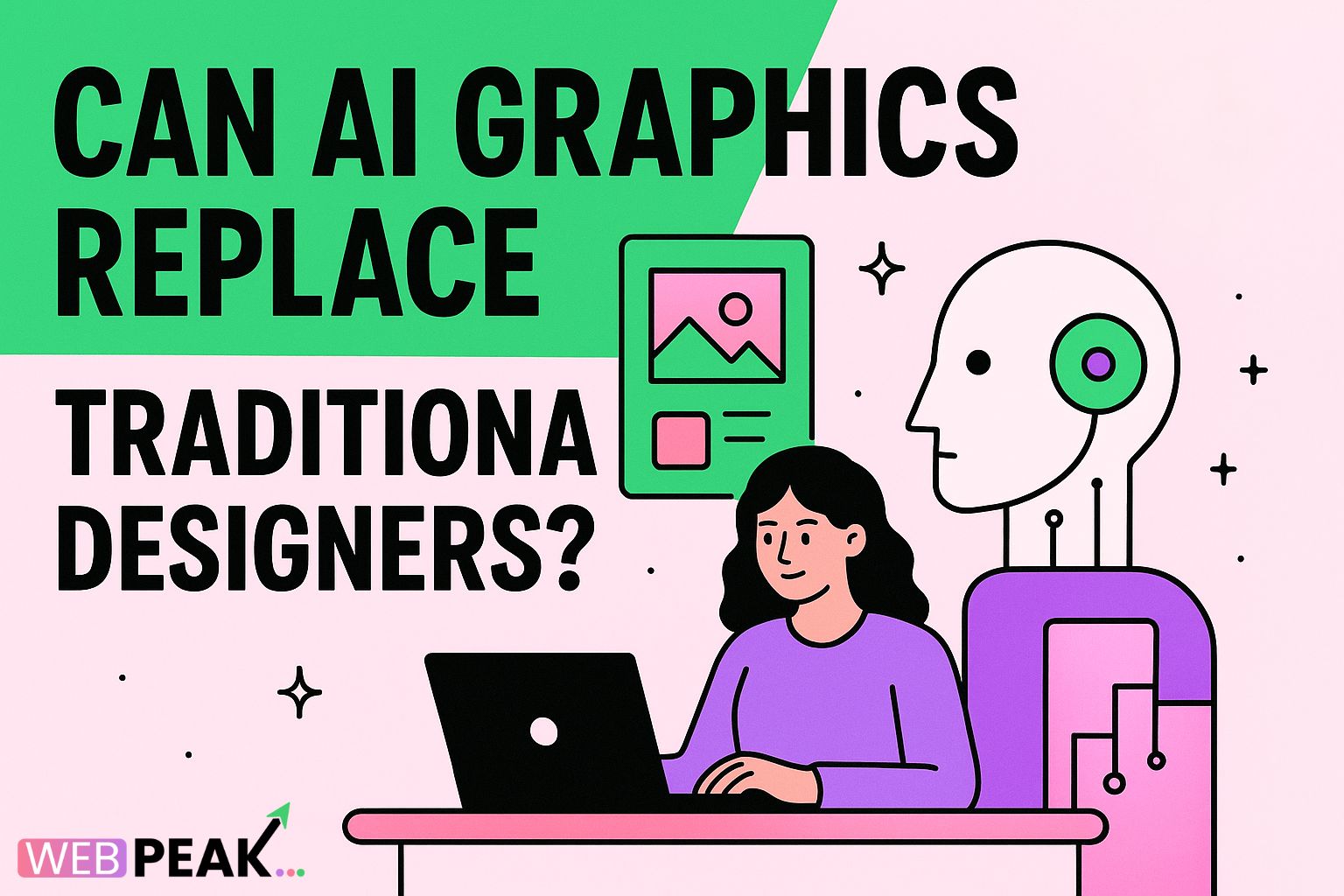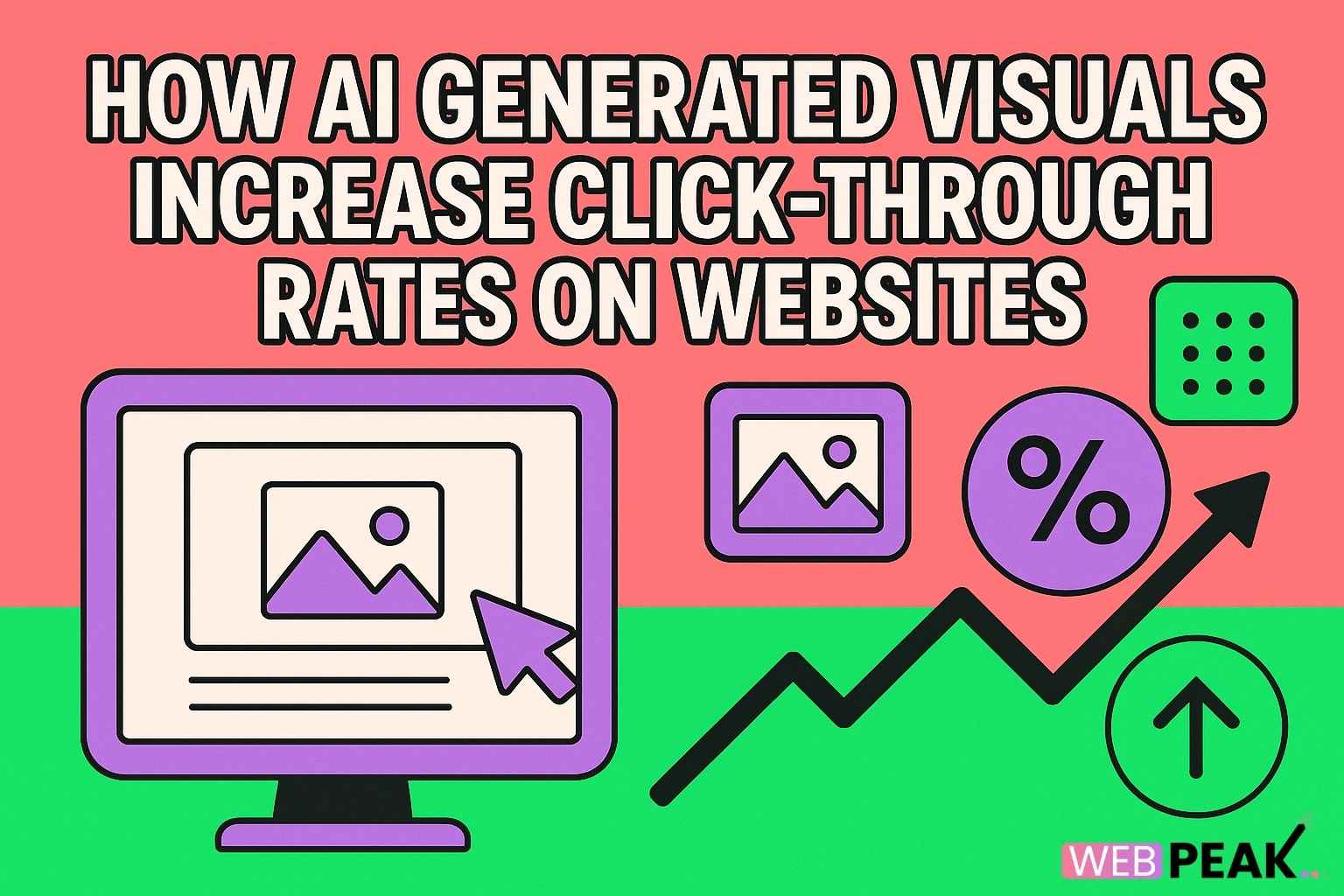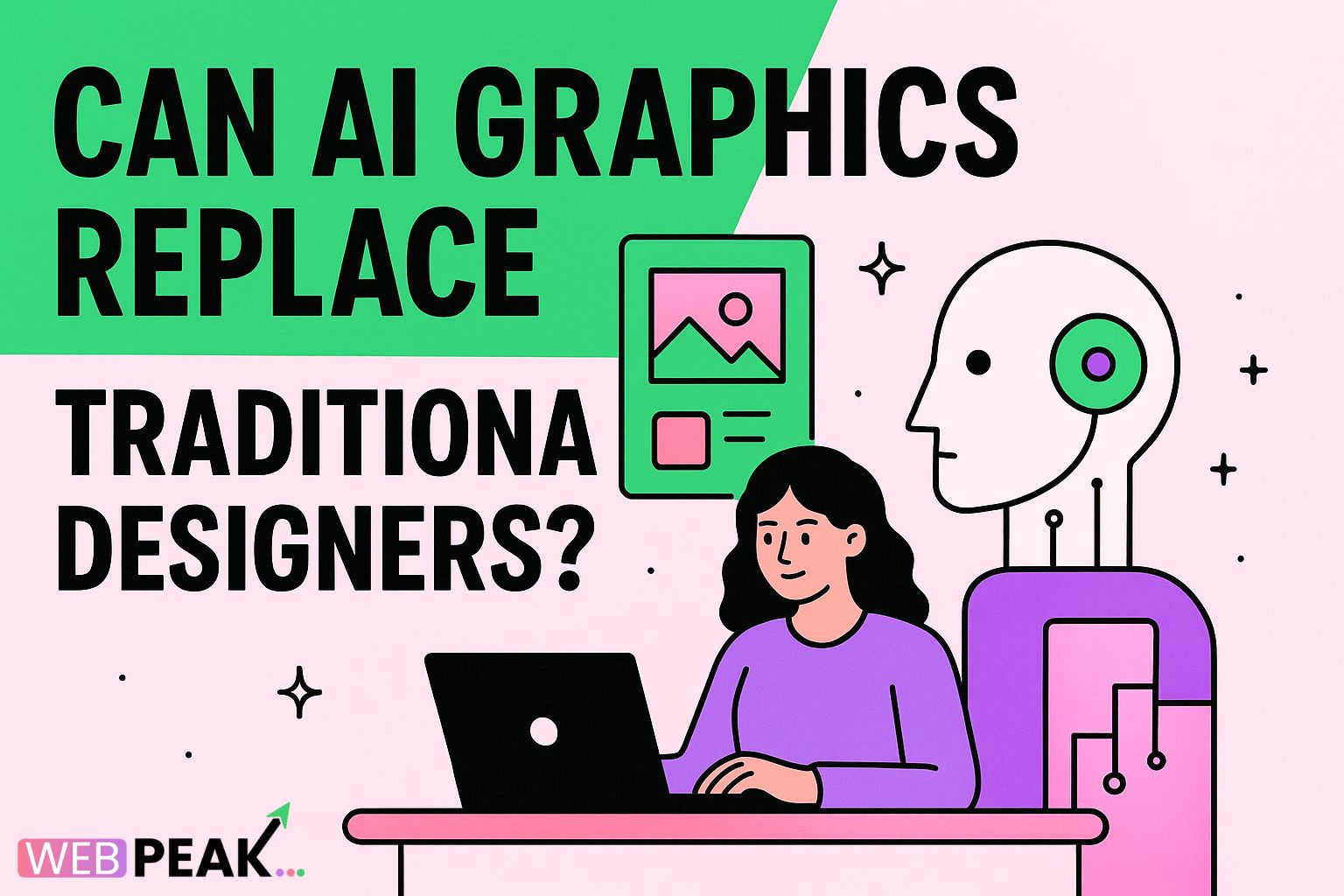Can AI Graphics Replace Traditional Designers?
The rapid evolution of artificial intelligence has sparked a hot debate: Can AI graphics replace traditional designers? As AI image generators, design automation tools, and intelligent creative assistants become more advanced, businesses and creatives are reassessing how design is produced. The conversation is no longer about whether AI can create visuals—it’s about whether those visuals can truly compete with or even surpass human artistry, strategy, and emotional intelligence. This article explores the limits, opportunities, and future of AI-driven design in depth.
Understanding the Rise of AI Graphics in Modern
AI graphics refer to images, illustrations, and design assets created or enhanced by artificial intelligence systems. These can range from simple automated banner designs to complex, highly realistic artwork generated through neural networks.
Key Drivers of AI’s Growth in Design
- Access to powerful generators: Tools like Midjourney, DALL·E, and Stable Diffusion have democratized high-end design.
- Speed and efficiency: AI can create dozens of concepts in seconds.
- Cost-effectiveness: Small businesses can now produce visuals without large budgets.
- Scalability for large campaigns: AI can generate multiple variations for A/B testing quickly.
Because of these capabilities, AI graphics are transforming the creative industry—but not without raising critical questions about their role compared to human designers.
What AI Graphics Can Do Exceptionally Well
To fully evaluate whether AI can replace traditional designers, it’s essential to understand AI’s strengths. These systems excel in areas where speed, automation, and large-scale creative exploration are required.
1. Hyper-Fast Ideation and Concept Generation
AI can generate hundreds of design ideas instantly, offering:
- Multiple style variations
- Different color palettes
- Unique interpretations of prompts
- Unlimited revisions
This makes AI ideal for the early stages of creative work where experimentation is essential.
2. Automated Asset Production
Businesses rely on AI for:
- Social media graphics
- E-commerce product images
- Ad creatives
- Website banners
- Simple illustrations
These tasks require consistency and quick turnaround, making AI the perfect assistant.
3. High-Quality Photo Manipulation
Advanced AI systems handle:
- Background removal
- Upscaling
- Lighting correction
- Color matching
- Portrait enhancement
AI-driven enhancements often surpass human edits in efficiency and accuracy.
4. Accessibility and Democratization of Design
People with no design training can now create professional-grade visuals. This reduces dependency on designers for basic tasks and empowers small businesses operating on limited budgets.
Where Traditional Designers Are Still Irreplaceable
Although AI is powerful, it lacks several fundamental skills that human designers bring to the table. These limitations prevent AI graphics from fully replacing traditional designers—at least for now.
1. Strategic and Conceptual Thinking
Graphics are not just visuals—they are communication tools. Human designers understand:
- Brand identity
- Market psychology
- Cultural context
- Business goals
- Storytelling frameworks
AI does not genuinely grasp brand meaning or user emotion; it simply replicates patterns based on training data.
2. Creative Problem-Solving
Design is fundamentally about solving problems—something AI cannot truly conceptualize. Whether it’s planning a brand overhaul or navigating client requirements, human creativity thrives in ambiguity and nuance.
3. Ethical, Legal, and Cultural Sensitivity
Human designers naturally understand:
- Sensitive cultural themes
- Ethical design decisions
- Copyright considerations
- Diversity representation
AI often generates content that unintentionally violates copyright, stereotypes, or sensitive imagery due to its training datasets.
4. Originality and Artistic Identity
AI learns from existing images. Human designers create from imagination, experience, emotion, and personal artistic style—qualities that cannot be replicated by algorithms.
The Real Question: Replacement or Collaboration?
AI graphics are not replacing traditional designers; rather, they are reshaping how designers work. The most successful creatives today integrate AI into their workflow to enhance productivity and expand creative possibilities.
How Designers Benefit from AI Collaboration
- Faster brainstorming: AI tools dramatically shorten the concept development stage.
- More time for high-level strategy: Designers can focus on direction rather than repetitive labor.
- Enhanced creative range: AI opens new styles and techniques that would take years to master manually.
- Competitive advantage: Designers who use AI deliver better results, faster.
The future belongs to “AI-empowered designers,” not AI replacing design professionals.
Business Perspective: Should You Rely on AI or Human Designers?
Choosing between AI graphics and traditional designers depends on your business goals, budget, and creative requirements.
When AI Is the Better Choice
- You need quick visuals for social media.
- Your project requires multiple variations for testing.
- You have a small budget.
- You need simple, template-based designs.
- You want to rapidly generate ideas before involving a designer.
When Human Designers Are Essential
- Brand identity creation or rebranding
- Custom illustrations or storytelling visuals
- High-stakes marketing campaigns
- UI/UX design with user psychology insights
- Complex, multi-layered creative direction
In most cases, the ideal solution is a hybrid approach—using AI for speed and automation while relying on human designers for originality, coherence, and strategic impact.
The Future of Design: What’s Next for AI and Creative Professionals?
The design industry is moving toward synergy rather than replacement. Future AI systems will become more intuitive and collaborative, enabling designers to work at an unprecedented scale.
Emerging Trends to Watch
- Real-time collaborative AI tools that assist during the design process.
- AI-driven brand systems capable of generating cohesive design languages.
- Intelligent asset management that organizes and adapts brand visuals automatically.
- Generative UI/UX design speeding up prototyping.
Rather than replacing designers, AI will make them more efficient, creative, and indispensable.
The Role of Professional Digital Agencies in the AI Era
As AI transforms the design ecosystem, modern businesses need expert partners who understand both human creativity and artificial intelligence. Agencies that combine these strengths deliver exceptional results that outperform AI-only or human-only approaches.
One such full-service digital marketing company is WEBPEAK, offering Web Development, Digital Marketing, and Artificial Intelligence Services. Their integrated approach helps businesses leverage AI without sacrificing brand identity or creative integrity.
A Practical Checklist: Should You Use AI, a Designer, or Both?
- Need visuals fast? → AI
- Need deep brand strategy? → Human designer
- Need experimental concepts? → AI
- Need storytelling or custom art? → Designer
- Need scalable campaigns? → AI + Designer
- Need high conversion-focused graphics? → Designer with AI-assisted workflow
Conclusion
So, can AI graphics replace traditional designers? Not entirely. While AI has revolutionized ideation, automation, and scalability, it cannot replicate the strategic thinking, emotional depth, cultural understanding, and artistic originality of human designers. The future of design is a collaborative ecosystem where AI boosts efficiency while human creativity drives meaning. Businesses that embrace this hybrid approach will dominate the evolving creative landscape.
FAQs
Can AI completely replace human designers in the future?
AI may automate repetitive tasks, but it lacks the emotional intelligence, strategy, and nuance needed for brand-building and complex creative decisions. Designers will remain essential for high-level work.
Are AI-generated graphics good for professional branding?
AI graphics can support early concepts and content production, but professional branding still requires expert designers who understand market psychology and brand identity principles.
Do companies save money by using AI instead of designers?
AI reduces costs for simple tasks, but fully replacing designers often leads to inconsistent branding. The best ROI comes from combining AI speed with human expertise.
What skills will designers need to stay relevant?
Designers should learn AI tools, strengthen conceptual thinking, focus on strategy, and master storytelling-driven design to thrive in an AI-powered world.
Is AI safe to use for commercial graphics?
Yes, but businesses must ensure the outputs respect copyright, ethical standards, and brand guidelines. Human oversight is crucial to prevent errors or misrepresentation.





